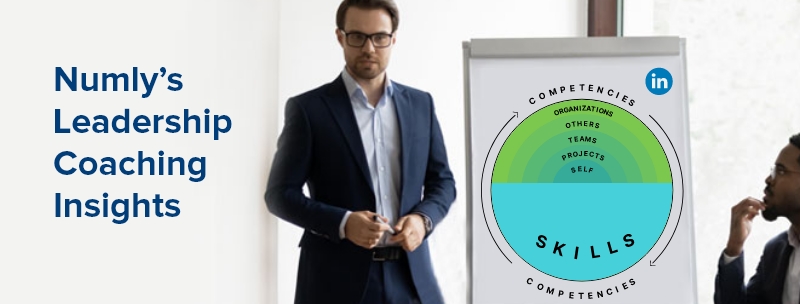In the year 2019, Texas A&M’s Professor Anthony Klotz termed the predicted mass exodus from the workforce as ‘The Great Resignation’ in the post-pandemic world. Also called ‘The Great Awakening’, these phrases are often used to express a global phenomenon as we begin to surface from the pandemic. And recent research indicates that this phenomenon is nowhere close to the end.
The US job market had four million people quit their jobs in April 2021 with the confidence that they could find a better fit with higher salaries, reskilling and retraining opportunities, more flexible hours, and better work culture in a completely new industry altogether. With a record number of people quitting their jobs, the exodus amounted to four million U.S. workers that constitute almost 2.7 percent of the workforce – the highest rate since 2000. Wall Street Journal headlines quoted “Forget Going Back to the Office – People Are Just Quitting Instead.”
Gallup found that 48 percent of employees were actively planning to make a transition in the next six months – employees would rather surrender their jobs than just revert to the ‘old normal’. Numerous experiences during the pandemic have empowered many to re-evaluate their work-life balance to prioritize their well-being above their employer. Some of the areas are pragmatic and related to the employees’ day-day and remote or hybrid work models. As a predictable response to the pandemic, the pre-pandemic employees who had already been teetering on the edge of quitting organizations with a toxic work culture saw themselves pushed to a breaking point.
The issues driving the Great Resignation are typically variations of a theme. Some areas are largely existential and focus on whether the organizations are fulfilling a pivotal purpose in employee satisfaction and belonging with an admirable turnaround strategy. Also, several others pointed to discontent and a feeling of insecurity attributed to cost-cutting policies by their current employer due to the pandemic-related business slowdowns.
A survey by the recruiting firm Robert Half cited stress and burnout, where 25 percent of employees forfeited paid time off in 2020, 44 percent were more burned out than they were a year ago, and 57 percent say they needed an extended ‘awaycation’ to unplug from work completely. 58 percent of workers felt optimistic that the job market would make a turnaround by the end of the year. Employees’ unflappable willingness to quit their offices and trade in old careers for greener pastures – ‘as a case for exploring better opportunities’, tells us a story. That, it may be prudent and insightful to acknowledge that greater flexibility, better benefits, and more supportive organizational cultures are now the cornerstone of employee purpose.
The fundamental disparity in promotions, frozen appraisals, and indiscriminate layoffs impact poor performers in particular, with the executive leadership refusing to partake in the anguish. Whilst most organizational leaders are continuing to scramble with these post-pandemic implications, the effect on the global economy in the long term can be catastrophic if left unacknowledged.
Peer coaching for a caring culture
The solution for all employers, however, is heavily reliant on building a caring culture. If the unprecedented shift in the workplace can be leveraged to create a culture of caring, employee satisfaction is ensured in meaningful ways that harbor loyalty and prevent them from looking at alternatives. Evidence published by a recent Stanford study states that many organizations with toxic environments drove out already disgruntled workers who survived the layoffs but were otherwise cognizant of working in an unsupportive environment.
Data collated over the years has continued to reveal that what is valued the most is how organizations treat their employees. That is measured by key metrics such as wages, benefits, and security, and ample opportunities for advancement, psychological safety, and an unwavering commitment to equity.
Peer coaching is the most critical of all contemporary learning competencies, and when augmented by Artificial Intelligence (AI), can be a potent development tool that cracks through common barriers to skill-building and penetrates the existing competencies in your organization. As opposed to traditional coaching, peer coaching synthesizes connections and transformational learning to ensure that employees are catalysts of change.
Peer coaching delivers a structure that advocates a continuous exchange of skills and experiences for delivering real-world solutions through guided questioning and discovery. The positive far-reaching impact of peer coaching is realized through motivation and self-exploration that resonates with personal success, and consequently organizational success. With organizations promoting decentralization in today’s accelerating work dynamic, the dissemination and management of change are ably addressed by peer coaching. Furthermore, peer coaching humanizes work, supports networking, and propels employee experience and fulfillment. With many learning functions currently stretched thin, the opportunity to elevate the social, experiential, and psychological paradigm of peer coaching makes it uniquely positioned to address the most pressing demands of the modern workplace paradigm.
Embracing a change culture is about employees engaging in human conversations versus transactional conversations. The ‘so-called’ Great Resignation suggests that employees do want to work, but the ground reality of being burned out and demanding more workplace support remains. A regular ‘9-to-5’ workday seems less realistic at this point, and time at home has made people prioritize their autonomy and mental health over the bottom line of their employers.
In the current workforce landscape, HR leaders and technology experts agree that bias and data issues deter AI’s ability to accurately predict employee flight risks. Although a host of AI-powered HR methods calibrate employee sentiment and empathy, the efficacy of these methods for the reversal of The Great Resignation essentially trickles down to the quality of data present with the organizations. Leaders must start conversations around what is important to their people, identify areas where they may be a shortfall of empathetic leadership, and converge on what is integral to people. The element of empathy driven in organizations through AI-enabled technology comes from elevating the employee experience journey with deep engagement at the core of learning policies, and collaborative and connected learning.
The forever changed workforce landscape has ensured that things are more than unlikely to return to the way they were, and organizations investing in maintaining high-performance cultures are beginning to see an evolution with their people. Conclusively, employees at all levels want to stay with organizations that value mental health and the very elementary need for human connections. Essentially, practices that were once considered a luxury are now imperative for driving loyalty and trumping the war of workforce attraction and retention.

